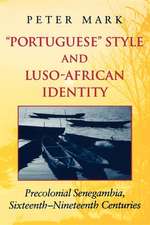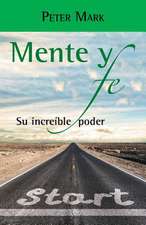Computational Structural Concrete 2e – Theory and Applications
Autor U Häussler–Combeen Limba Engleză Paperback – 4 oct 2022
Preț: 443.43 lei
Preț vechi: 547.44 lei
-19% Nou
Puncte Express: 665
Preț estimativ în valută:
84.85€ • 90.73$ • 70.75£
84.85€ • 90.73$ • 70.75£
Carte disponibilă
Livrare economică 24-31 martie
Livrare express 13-19 martie pentru 49.93 lei
Preluare comenzi: 021 569.72.76
Specificații
ISBN-13: 9783433033104
ISBN-10: 3433033102
Pagini: 448
Dimensiuni: 171 x 244 x 22 mm
Greutate: 0.84 kg
Ediția:2nd Edition
Editura: Wiley Vch
Locul publicării:Weinheim, Germany
ISBN-10: 3433033102
Pagini: 448
Dimensiuni: 171 x 244 x 22 mm
Greutate: 0.84 kg
Ediția:2nd Edition
Editura: Wiley Vch
Locul publicării:Weinheim, Germany
Notă biografică
Ulrich Häussler-Combe studierte Bauingenieurwesen mit Vertiefung Konstruktiver Ingenieurbau an der TU Dortmund und promovierte an der TH Karlsruhe. Nach zehn Jahren Ingenieurpraxis und Programmentwicklung in der Industrie kehrte er zurück an die Universität Karlsruhe und lehrte dort CAD und Praktische Baudynamik. Im Jahr 2003 wurde er Universitätsprofessor für Spezielle Massivbauwerke am Institut für Massivbau der TU Dresden. Seit 2021 ist er im Ruhestand, dabei noch als Gastprofessor an der Technischen Universität München aktiv.
Cuprins
Preface Notations List of Examples 1 INTRODUCTION 2 FINITE ELEMENTS OVERVIEW 2.1 Modeling Basics 2.2 Discretization Outline 2.3 Elements 2.4 Material Behavior 2.5 Weak Equilibrium 2.6 Spatial Discretization 2.7 Numerical Integration 2.8 Equation Solution Methods 2.9 Discretization Errors 3 UNIAXIAL STRUCTURAL CONCRETE BEHAVIOR 3.1 Uniaxial Stress-Strain Behavior of Concrete 3.2 Long-Term Behavior - Creep and Imposed Strains 3.3 Reinforcing Steel Stress-Strain Behavior 3.4 Bond between Concrete and Reinforcement 3.5 The Smeared Crack Model 3.6 The Reinforced Tension Bar 3.7 Tension Stiffening of Reinforced Bar 4 STRUCTURAL BEAMS AND FRAMES 4.1 Cross-Sectional Behavior 4.2 Equilibrium of Beams 4.3 Finite Element Types for Plane Beams 4.4 System Building and Solution 4.5 Creep of Concrete 4.6 Temperature and Shrinkage 4.7 Tension Stiffening 4.8 Prestressing 4.9 Large Displacements - 2nd-Order Analysis 4.10 Dynamics 5 STRUT-AND-TIE MODELS 5.1 Elastic Plate Solutions 5.2 Strut-and-Tie Modeling 5.3 Solution Methods for Trusses 5.4 Rigid-Plastic Truss Models 5.5 Application Aspects 6 MULTIAXIAL CONCRETE MATERIAL BEHAVIOR 6.1 Basics 6.1.1 Continua and Scales 6.1.2 Characteristics of Concrete Behavior 6.2 Continuum Mechanics 6.3 Isotropy, Linearity, and Orthotropy 6.4 Nonlinear Material Behavior 6.5 Elastoplasticity 6.6 Damage 6.7 Damaged Elastoplasticity 6.8 The Microplane Model 6.9 General Requirements for Material Laws 7 CRACK MODELING AND REGULARIZATION 7.1 Basic Concepts of Crack Modeling 7.2 Mesh Dependency 7.3 Regularization 7.4 Multiaxial Smeared Crack Model 7.5 Gradient Methods 7.6 Discrete Crack Modeling Overview 7.7 A Strong Discontinuity Approach 8 PLATES 8.1 Lower Bound Limit Analysis 8.2 Cracked Concrete Modeling 8.3 Reinforcement and Bond 8.4 Integrated Reinforcement 8.5 Embedded Reinforcement with Flexible Bond 9 SLABS 9.1 Classification 9.2 Cross-Sectional Behavior 9.3 Equilibrium of Slabs 9.4 Reinforced Concrete Cross Sections 9.5 Slab Elements 9.6 System Building and Solution Methods 9.7 Lower Bound Limit State Analysis 9.8 Nonlinear Kirchhoff Slabs 9.9 Upper Bound Limit State Analysis 10 SHELLS 10.1 Geometry and Displacements 10.2 Deformations 10.3 Shell Stresses and Material Laws 10.4 System Building 10.5 Slabs and Beams as a Special Case 10.6 Locking 10.7 Reinforced Concrete Shells 11 RANDOMNESS AND RELIABILITY 11.1 Uncertainty and Randomness 11.2 Failure Probability 11.3 Design and Safety Factors 12 CONCLUDING REMARKS A SOLUTION METHODS A.1 Nonlinear Algebraic Equations A.2 Transient Analysis A.3 Stiffness for Linear Concrete Compression A.4 The Arc Length Method B MATERIAL STABILITY C CRACK WIDTH ESTIMATION D TRANSFORMATIONS OF COORDINATE SYSTEMS E REGRESSION ANALYSIS INDEX LIST OF EXAMPLES 3.1 Tension bar with localization 3.2 Tension bar with creep and imposed strains 3.3 Simple uniaxial smeared crack model 3.4 Reinforced concrete tension bar 4.1 Moment-curvature relations for given normal forces 4.2 Simple reinforced concrete (RC) beam 4.3 Creep deformations on RC beam 4.4 Effect of temperature actions on a RC beam 4.5 Effect of tension stiffening on a RC beam with external and temperature loading 4.6 Prestressed RC beam 4.7 Stability limit of cantilever column 4.8 Ultimate limit for RC cantilever column 4.9 Beam under impact load 5.1 Continuous interpolation of stress fields with the quad element 5.2 Deep beam with strut-and-tie model 5.3 Corbel with an elastoplastic strut-and-tie model 6.1 Mises elastoplasticity for uniaxial behavior 6.2 Uniaxial stress-strain relations with Hsieh-Ting-Chen damage 6.3 Stability of Hsieh-Ting-Chen uniaxial damage 6.4 Microplane uniaxial stress-strain relations with de Vree damage 7.1 Plain concrete plate with notch 7.2 Plain concrete plate with notch and crack band regularization 7.3 2D smeared crack model with elasticity 7.4 Gradient damage formulation for the uniaxial two-node bar 7.5 Phase field formulation for the uniaxial tension bar 7.6 Plain concrete plate with notch and SDA crack modeling 8.1 Reinforcement design for a deep beam with a limit state analysis 8.2 Simulation of cracked reinforced deep beam 8.3 Simulation of a single fiber connecting a dissected continuum 8.4 Reinforced concrete plate regarding flexible bond 9.1 Linear elastic rectangular slab with opening and free edges 9.2 Reinforcement design for a slab with opening and free edges with a limit state analysis 9.3 Computation of shear forces and shear design 9.4 Elastoplastic slab with opening and free edges 9.5 Simple RC slab under concentrated loading 9.6 Simple RC slab with yield line method and distributed loading 9.7 Simple RC slab with yield line method and concentrated loading 10.1 Convergence study for linear simple slab 10.2 Simple RC slab with interaction of normal forces and bending 11.1 Analytical failure probability of cantilever column 11.2 Approximate failure probability of cantilever column with a Monte Carlo integration 11.3 Simple partial safety factor derivation











